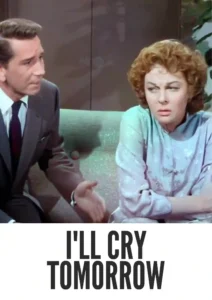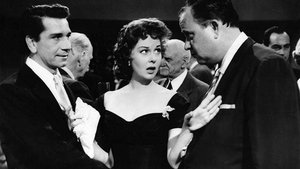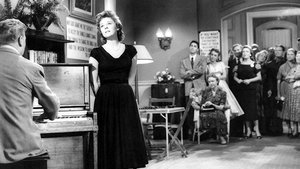Contact: info@alwanfilm.com
Video Sources 0 Views
- Watch trailer
- I'll Cry Tomorrow


I’ll Cry Tomorrow 1955 Colorized
Synopsis
Table of Contents
ToggleI’ll Cry Tomorrow 1955 Colorized: A Melodrama Transformed – A Review

Introduction
Unraveling the tapestry of triumph and tragedy, “I’ll Cry Tomorrow” stands as a poignant testament to the human spirit’s resilience. Released in 1955, this captivating melodrama has left an indelible mark on the landscape of classic cinema. In this review, we delve into the significance of the film’s early colored version, exploring how colorization redefines the emotional landscape of “I’ll Cry Tomorrow” and reshapes its legacy in the annals of film history.
Check The Full Colorized Movies List
Check Our Colorized Movies Trailer Channel
Understanding I’ll Cry Tomorrow 1955 Colorized: Director, Cast, and Genre
Directed by Daniel Mann, “I’ll Cry Tomorrow” emerges as a masterclass in melodrama, showcasing the evocative storytelling and raw emotion that defined the era of classic Hollywood. At its heart lies Susan Hayward’s mesmerizing portrayal of Lillian Roth, a gifted performer whose rise to stardom is eclipsed by the shadows of addiction and despair. Supported by a talented ensemble including Richard Conte and Eddie Albert, Hayward delivers a tour de force performance that resonates with authenticity and depth. Blending elements of drama, romance, and tragedy, “I’ll Cry Tomorrow” remains a timeless classic that continues to captivate audiences with its heartfelt storytelling and unforgettable characters.
Exploring the World of I’ll Cry Tomorrow 1955 Colorized: Plot and Characters
Set against the backdrop of Broadway’s glittering lights, “I’ll Cry Tomorrow” traces Lillian Roth’s meteoric ascent to fame and the harrowing descent into the depths of addiction. As Lillian grapples with the demons of alcoholism and despair, she must confront the painful realities of her past and find the strength to reclaim her life. Through its richly drawn characters and emotionally charged storyline, the film offers a powerful exploration of addiction, redemption, and the indomitable human spirit.
The Art of Film Colorization
Colorization serves as a transformative tool in the cinematic landscape, offering filmmakers the opportunity to reimagine classic films for contemporary audiences. By infusing black-and-white footage with vibrant hues and textures, colorization breathes new life into timeless classics, inviting viewers to experience these films in a fresh and immersive way. While some purists may question the necessity of colorization, others see it as a valuable means of preserving and revitalizing cinematic treasures for future generations to enjoy.
Early Colored Films: A Brief History
The history of colorization is a testament to the evolution of cinematic technology and innovation. From the earliest hand-tinted films to the advent of Technicolor and Eastmancolor, the emergence of colorization has transformed the visual landscape of cinema, offering filmmakers new avenues for artistic expression and creativity. As the technology continues to advance, so too does the potential for colorization to shape the future of filmmaking and storytelling.
I’ll Cry Tomorrow 1955 and Its Early Colored Version
The decision to release “I’ll Cry Tomorrow” in a colorized format represents a bold departure from tradition, offering audiences a fresh perspective on this timeless classic. By adding color to Mann’s atmospheric direction and Hayward’s powerhouse performance, the early colored version elevates the emotional impact of the film, immersing viewers in its richly textured world. Whether experienced in its original black-and-white format or its early colored edition, “I’ll Cry Tomorrow” remains a powerful and unforgettable cinematic experience.
The Debate Over Film Colorization
The debate over film colorization reflects broader discussions about art, authenticity, and cultural heritage. While some argue that colorization detracts from the original artistic vision of a film, others see it as a valuable means of preserving and reimagining cinematic classics for modern audiences. As filmmakers and audiences continue to grapple with questions of authenticity and artistic integrity, the debate over film colorization remains as vibrant and contentious as ever.
Examining I’ll Cry Tomorrow 1955 as an Early Colored Film
For fans of classic cinema, the early colored version of “I’ll Cry Tomorrow” offers a fresh and immersive viewing experience. From the glittering lights of Broadway to the shadows of addiction and despair, the addition of color enhances the film’s visual impact and emotional resonance, inviting audiences to rediscover this timeless classic in a new light. Whether viewed in its original black-and-white format or its early colored edition, “I’ll Cry Tomorrow” stands as a testament to the enduring power of cinema to move and inspire.
Influence and Legacy: I’ll Cry Tomorrow 1955 Colorized’s Impact on Cinema
“I’ll Cry Tomorrow” has left an indelible mark on the landscape of cinema, inspiring generations of filmmakers and captivating audiences with its timeless appeal. Its influence can be seen in the countless melodramas that have followed in its wake, as well as in the enduring popularity of Hayward’s performance. The film’s early colored version has also contributed to its legacy, sparking conversations about the role of colorization in preserving and reimagining cinematic classics for modern audiences.
Director’s Cinematic Legacy: Beyond I’ll Cry Tomorrow 1955 Colorized
Daniel Mann’s legacy extends far beyond “I’ll Cry Tomorrow,” with the director leaving an indelible mark on the world of cinema. His innovative storytelling techniques, keen eye for detail, and distinctive visual style have earned him a place among the pantheon of great filmmakers. Mann’s influence can be seen in the work of directors who have been inspired by his unique approach to storytelling, ensuring that his legacy will endure for generations to come.
Themes Explored in I’ll Cry Tomorrow 1955 Colorized
At its core, “I’ll Cry Tomorrow” is a film about the human condition and the power of the human spirit to overcome adversity. Themes of addiction, redemption, and resilience pervade the narrative, as Lillian Roth grapples with the demons of her past and finds the strength to rebuild her life. Through its heartfelt storytelling and emotionally resonant characters, the film offers a powerful meditation on the nature of hope, healing, and the enduring bonds of love and friendship.
Reception and Controversy Surrounding I’ll Cry Tomorrow 1955 Colorized
Upon its release, “I’ll Cry Tomorrow” received widespread critical acclaim, with praise for its heartfelt performances, evocative storytelling, and lush cinematography. Audiences were captivated by the film’s emotional depth and authenticity, making it a commercial success at the box office. However, the decision to release the film in a colorized format sparked controversy among some cinephiles, who questioned the necessity of altering the original artistic vision. Despite these concerns, “I’ll Cry Tomorrow” remains a beloved classic of American cinema, revered by critics and audiences alike for its timeless storytelling and enduring impact.
Where to Watch I’ll Cry Tomorrow 1955 Colorized Online
For those eager to experience the timeless drama of “I’ll Cry Tomorrow,” the film is available for streaming on a variety of platforms, including Amazon Prime Video, iTunes, Google Play, and YouTube Movies. Whether viewed in its original black-and-white format or its early colored edition, the film promises to captivate audiences with its powerful storytelling and unforgettable performances.
FAQs About I’ll Cry Tomorrow 1955 Colorized
Q: Is “I’ll Cry Tomorrow” based on a true story?
A: Yes, “I’ll Cry Tomorrow” is based on the autobiography of Lillian Roth, a renowned performer whose life story captivated audiences around the world.
Q: Who are the main actors in “I’ll Cry Tomorrow”?
A: The film stars Susan Hayward in the lead role of Lillian Roth, alongside Richard Conte, Eddie Albert, and Jo Van Fleet.
Q: What is the significance of the film’s early colored version?
A: The early colored version of “I’ll Cry Tomorrow” offers viewers a fresh perspective on this classic melodrama, enhancing its visual impact and immersing them in its richly textured world.
Conclusion
In conclusion, “I’ll Cry Tomorrow” stands as a timeless classic of American cinema, revered for its powerful storytelling, unforgettable performances, and enduring impact on the landscape of film. Whether viewed in its original black-and-white format or its early colored edition, the film continues to captivate audiences with its raw emotion, atmospheric direction, and haunting storyline. As debates about film colorization continue to unfold, “I’ll Cry Tomorrow” serves as a shining example of the transformative power of cinema, ensuring its legacy will endure for generations to come.













